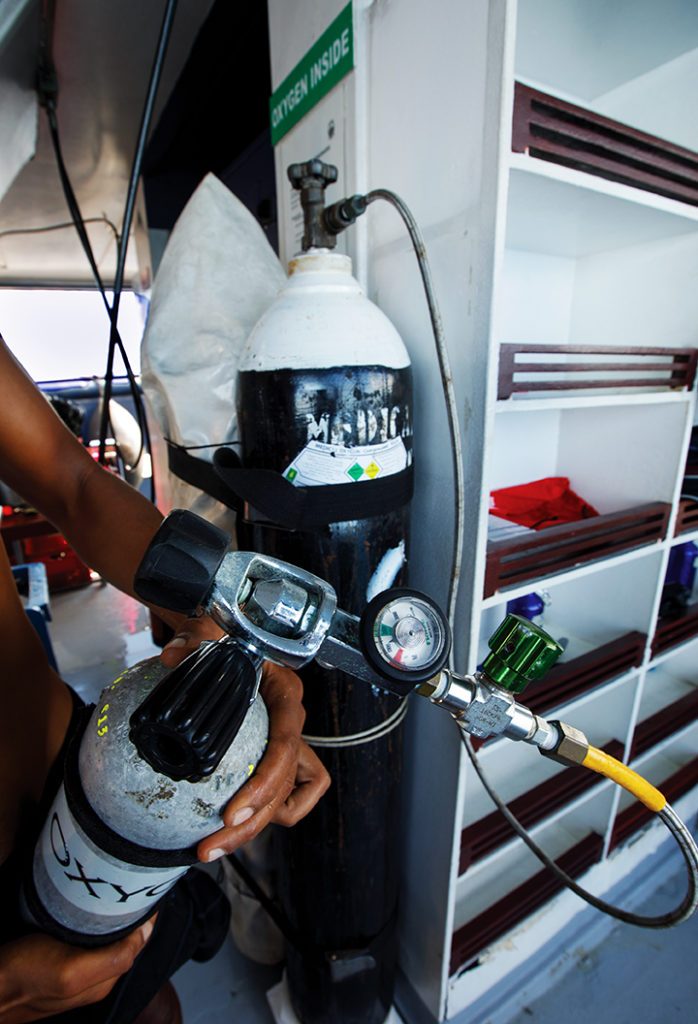DAN INTRODUCED THE FIRST standardized emergency oxygen course for divers as lay providers in 1991. More people trained in oxygen delivery means that providers in dive locations worldwide need to have emergency oxygen units available. Obtaining oxygen refills, however, is an ongoing problem, because procuring medical-grade oxygen requires a prescription.

STEPHEN FRINK
Oxygen has other dive-related uses. Technical and rebreather divers require enriched-gas mixtures up to pure oxygen and often use partial-pressure techniques to make nitrox, heliox, and trimix. In some applications, most commonly for commercial divers, surface decompression occurs in a hyperbaric chamber, with the divers breathing pure oxygen to complete their decompression obligation. These applications are not medical, but they require pure, breathing-gas-quality oxygen.
What is pure oxygen, what is breathing oxygen, and how can you obtain oxygen for nonmedical use? The Compressed Gas Association (CGA), in its specification CGA G-4.3-2018, provides quality verification levels for oxygen and classifies oxygen in gas form into four grades: medical oxygen (grade A, designated as U.S. Pharmacopeia, or USP), industrial oxygen (grade C), aviator breathing oxygen (ABO, or grade E), and high-purity, semiconductor industry oxygen (grade F). The purity requirements significantly increase as you progress from grades A to F.
USP oxygen has the lowest purity requirement at 99 percent oxygen. ABO, which is also certified for breathing applications, must be 99.5 percent pure and has a tight limit on the amount of moisture allowed. The U.S. Food and Drug Administration classifies medical oxygen as a drug that must be analyzed and certified as USP
and can be dispensed only by medical prescription.
The same process produces almost all pure oxygen gas, and the primary differences are simply the analysis certificates. An acceptable, safe, available, and affordable alternative to medical oxygen is ABO, which is perfectly acceptable for all breathing-oxygen applications, but medical applications administered by or under the supervision of a physician require USP.
Some industry gas supply companies will be unwilling to fill your cylinders and offer only the option of renting theirs. While it might seem financially motivated, they might believe they can control their equipment’s cleanliness and might doubt the cleanliness of yours. Compressing oxygen is not without its dangers, some of which are related to contamination inside the cylinder and valve.
Purely from a safety and quality point of view, ABO can be used to fill USP oxygen cylinders, but not the other way around. You will need to do your own shopping for prices and availability, but ABO is the highest quality oxygen for dive-related activities, including technical mixes, emergency oxygen by the layperson, and rebreather cylinder refills.
Oxygen is oxygen, and if the purity exceeds 99 percent, it is safe for use where pure oxygen is required. The critical consideration is if you need breathing gas, in which case only USP and ABO meet the requirement. AD
© Alert Diver — Q4 2022